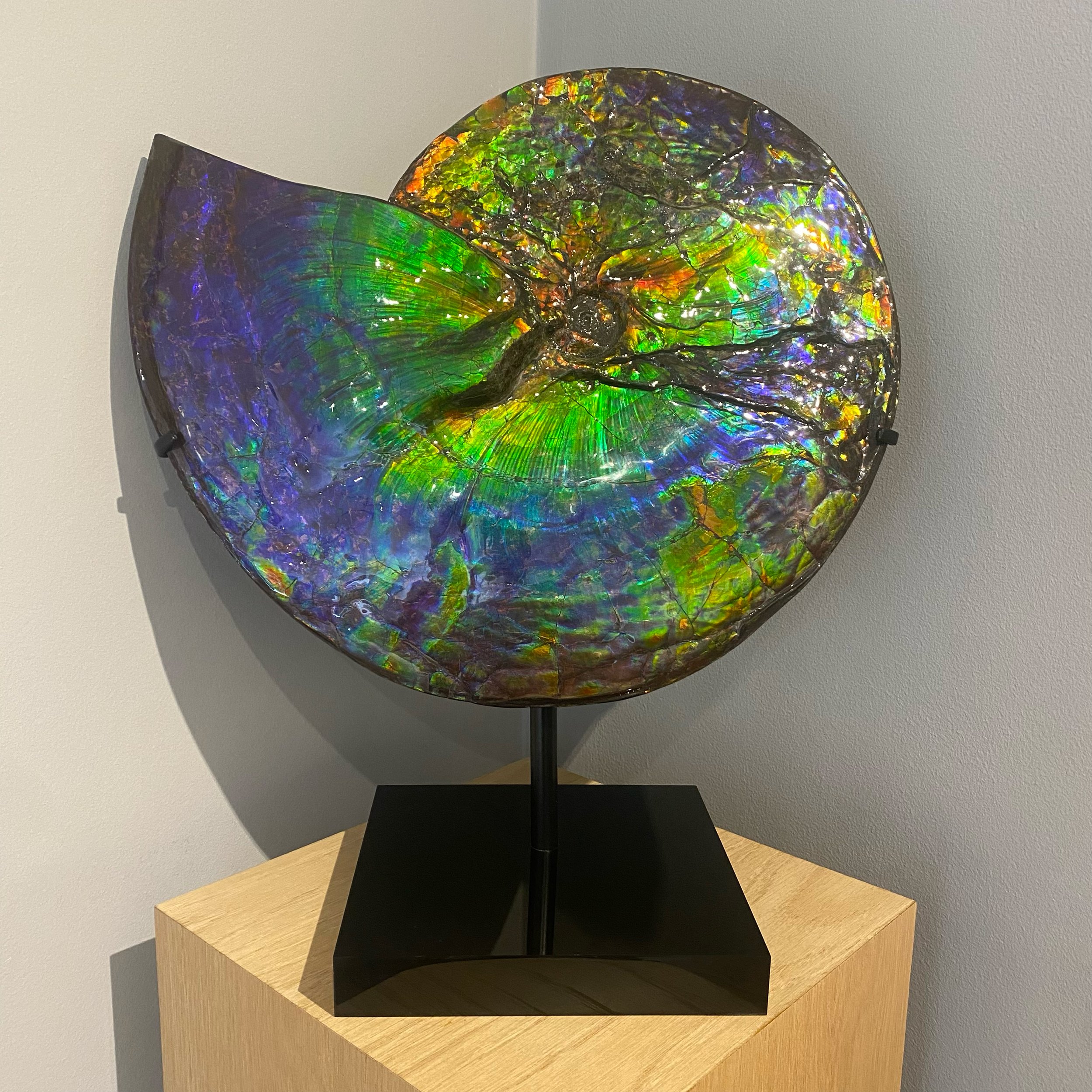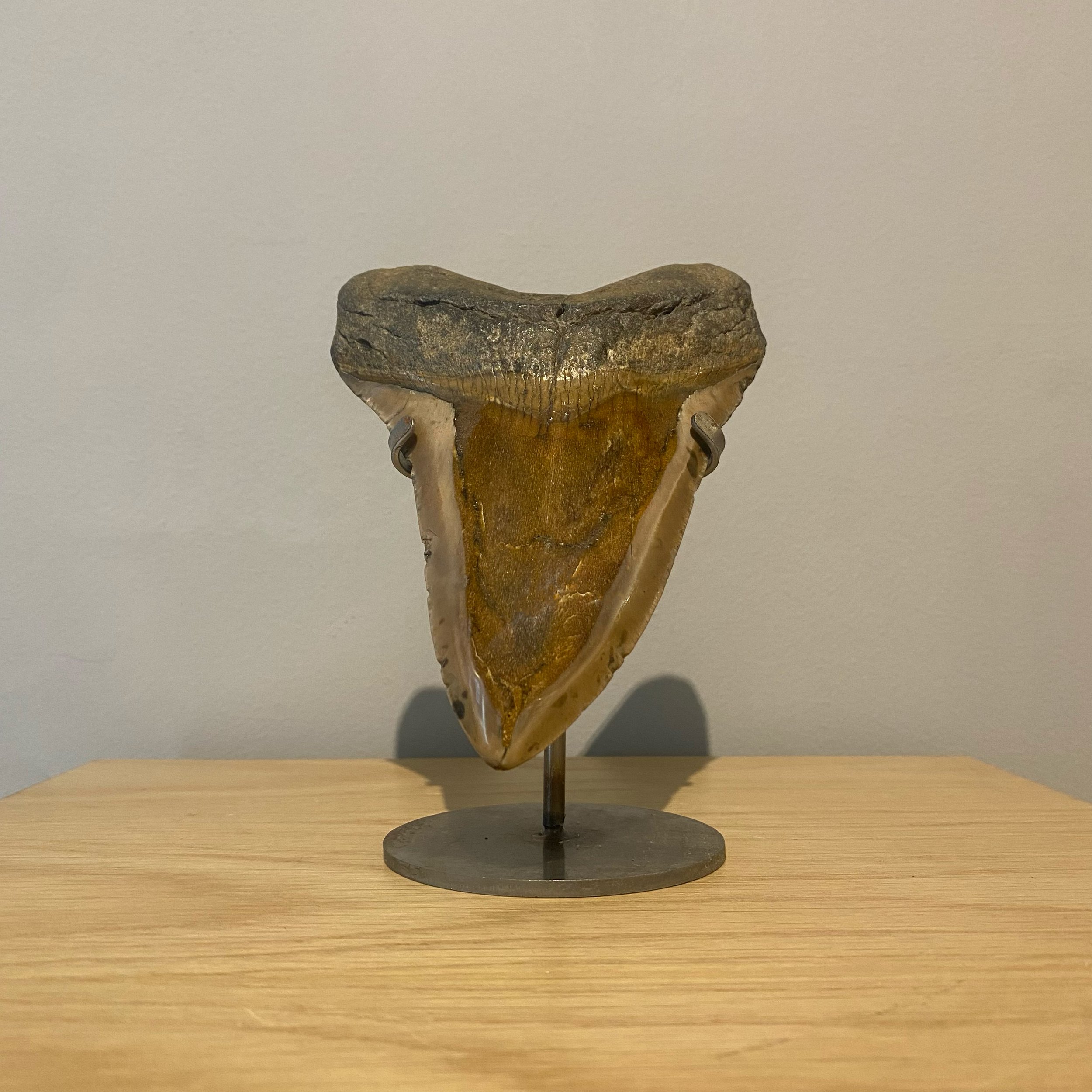Fossilised Ammonite Plate
Fossilised Ammonite Plate
Fossilised Ammonite Plate
Late Jurassic Period (164-145 million years ago)
75 x 55 x 6 cm
Dorset, UK
£6,000.00
Ammonites were marine animals belonging to the phylum Mollusca and the class Cephalopoda. The ammonite’s coiled shell was divided into chambers separated by walls known as septa. These made the shell stronger and prevented the water pressure from crushing it, ammonites, however, most likely couldn't survive at depths more than 100 meters. The ammonite itself lived in only the last chamber, the body chamber, the other chambers contained gas or fluid, which the ammonite could manage to control its buoyancy and movement, much like a submarine.
Ammonites fed on small plankton, or vegetation growing on the sea floor. They may have also consumed drifting, slow-swimming, or dead sea creatures, as well as slow-moving organisms that resided on the sea floor, including foraminifera, ostracods, tiny crustaceans, immature brachiopods, corals, and bryozoa.
This example is the species Arnioceras semicostatum dating back to the Late Jurassic period (164-145 million years ago) and was discovered in Dorset’s ‘Jurassic coast’ which runs from East Devon to East Dorset, is 96 miles long and gained its name due to the abundance of fossils found in its cliffs dating from the Jurassic period.














